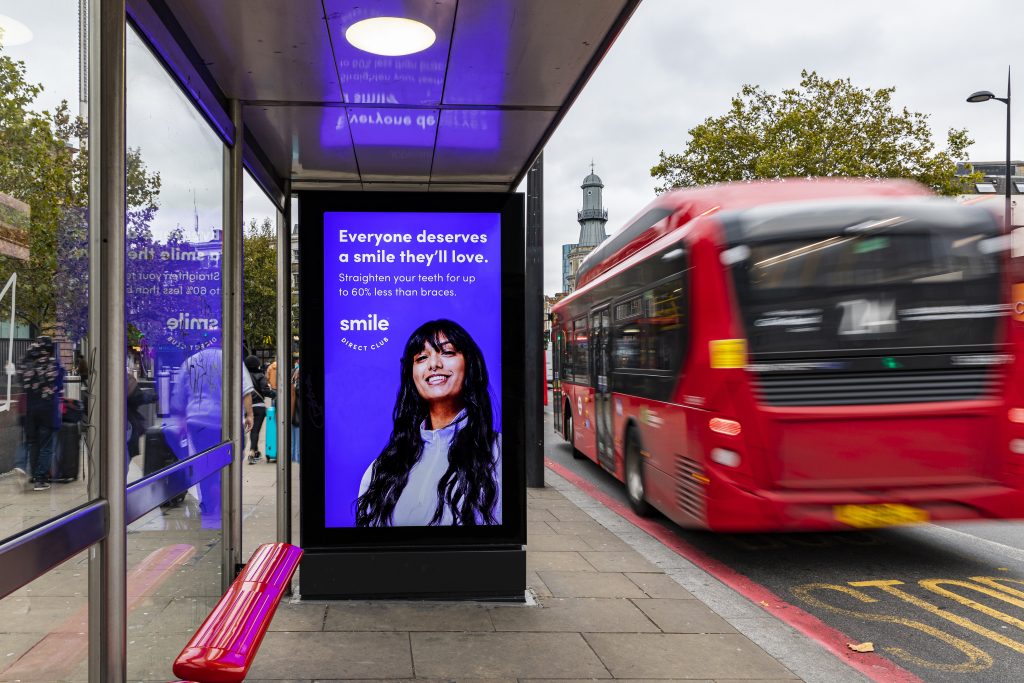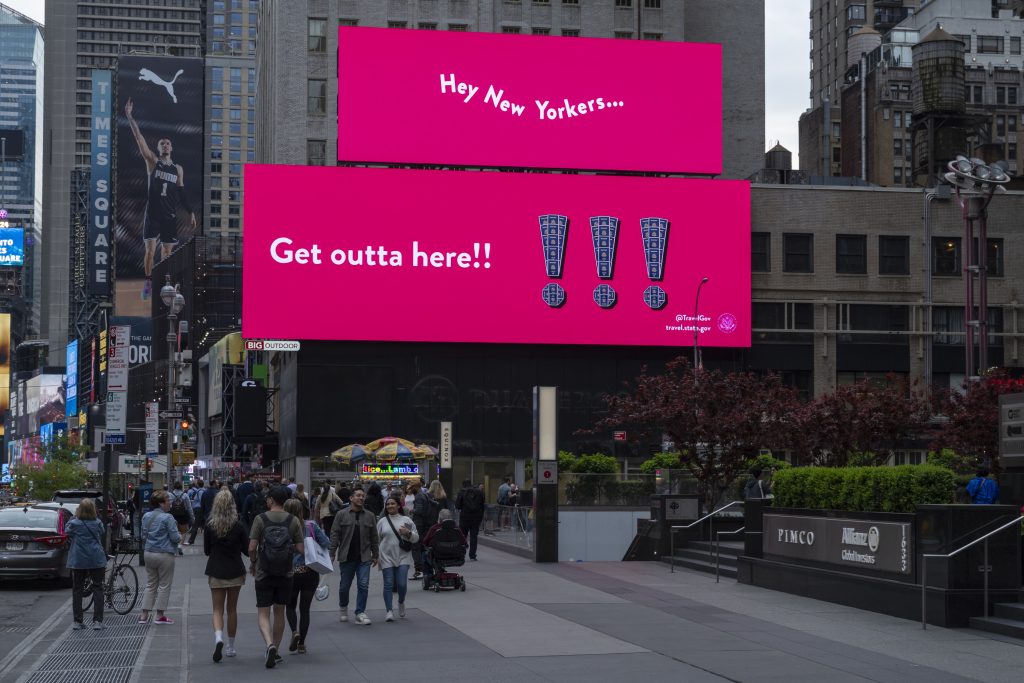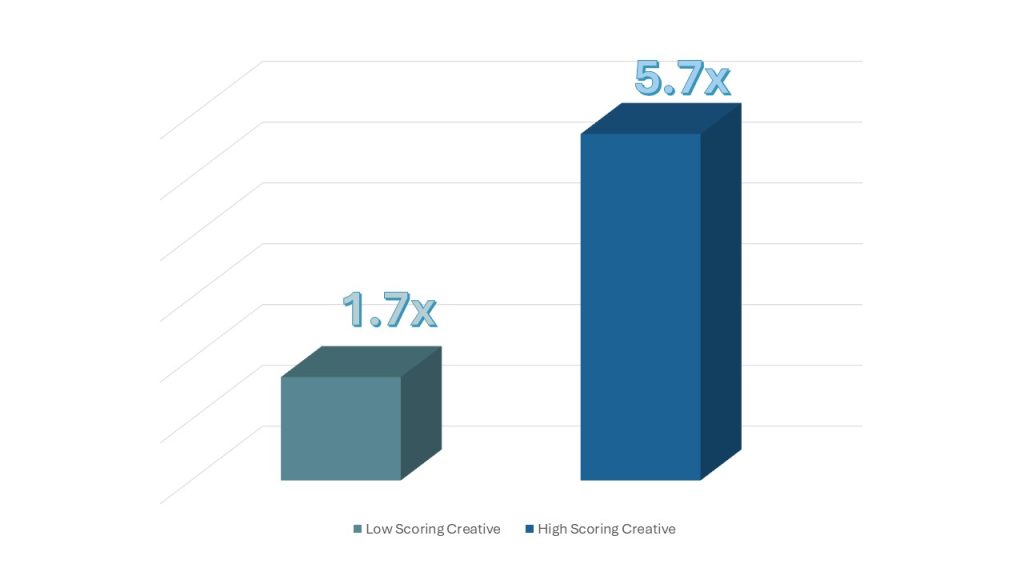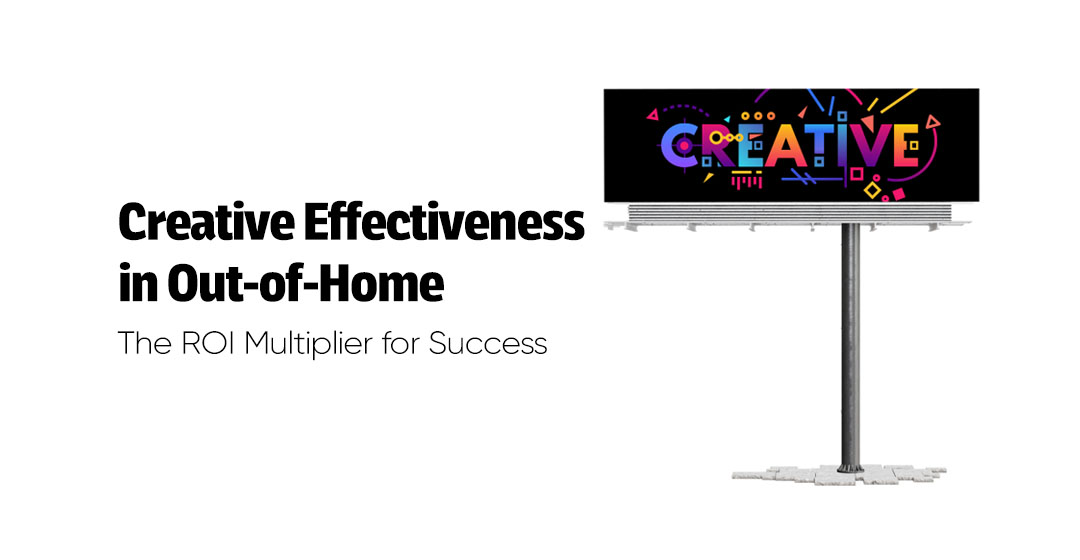Creative effectiveness in OOH may be one of the most important, and unfortunately, most overlooked aspects of a successful Out-of-Home campaign. In today’s media landscape, every advertising dollar needs to be optimized to work as hard as possible. With consumers bouncing between streaming services, social feeds, and ad blockers, marketers are rightfully asking, “How can I reach people, and make an impact?”
Here’s the answer you might not expect: Billboards. Bus shelters. Transit ads. The humble, enduring world of Out-of-Home advertising.
But here’s the twist—OOH isn’t just surviving in the digital age. It’s thriving. And the secret weapon? Creativity married with attention. When you combine OOH’s unique ability to capture eyeballs with genuinely creative execution, the results aren’t just good—they’re measurably, provably excellent for your bottom line.
Let’s dig into why OOH deserves a starring role in your media plan, backed by data that’ll make your CFO smile.
The Attention Economy: OOH’s Natural Advantage
We live in an attention recession. Between banner blindness, ad skipping, and the general chaos of digital media, getting anyone to actually look at your ad is half the battle. This is where OOH shines with an almost unfair advantage.
Consider this: OOH delivers a 13.3% increase in ad awareness compared to digital media, TV, and even CTV, according to a comprehensive five-year study by Clear Channel Outdoor and Kantar. That’s not a typo—OOH is outperforming the channels that dominate most media budgets.
But it gets better. The average OOH ad captures 12 seconds of attention, with 90% of OOH ads passing the crucial 2.5-second threshold needed to create a long-term memory. Compare that to digital’s fleeting impressions, and suddenly those billboards look a lot more attractive. In fact, OOH has a 5.9x memorability advantage over digital when it comes to sticking in people’s minds.
Think about it: you can’t skip a billboard. You can’t install an ad blocker for bus shelters. And unlike that pre-roll ad that people are desperately trying to skip, OOH exists in the real world where your audience actually lives their lives.
But here’s an important question: what are you doing with that attention once you have it?
Creative Effectiveness in OOH Converts Attention Into Profit
When we start to put some data behind it, the importance of creative becomes impossible to ignore, and easy for marketers to get excited about.
A study by Ebiquity and Lumen Research revealed something pretty remarkable: there’s a 98% correlation between greater attention and incremental profit per 1,000 impressions. Read that again. Ninety-eight percent. That’s about as close to a sure thing as you’ll find in marketing.
The research compared attention metrics across media channels with actual profit ROI, and the results speak for themselves. More attention equals more profit. Period.
And here’s the kicker: OOH is more cost-efficient at $6.41 CPM versus $12.20 for the all-media average, according to Ipsos research. You’re getting premium attention at a value price. The Clear Channel/Kantar study confirms that OOH matches linear TV in driving favorability and purchase intent—but at a more efficient price point.

The ROI Multiplier: Why Creative Effectiveness in OOH is Non-Negotiable
OOH’s ability to deliver attention, and to do so cost-effectively, is great, but that’s merely the ante. The ultimate success of your campaign—the difference between breaking even and achieving massive returns—hinges entirely on the message itself.
The other part of the equation is creativity. Getting your audience’s attention is only half the battle—what you do with that attention once you have it determines whether you’re building a brand or just burning budget.
The research around this topic provides some compelling evidence. A comprehensive WARC and System1 study analyzing 304 campaigns found that:
- High-quality creative (4-5 stars) delivers an average revenue ROI of 8.1 versus just 3.3 for low-quality creative
- Strong long-term creative produces a profit ROI of 5.7 compared to 1.7 for weak creative
- 58% of Effie award-winning campaigns used OOH versus only 33% of all entrants
Translation: investing in genuinely good creative isn’t a nice-to-have. It’s the difference between doubling your returns and barely breaking even.
What Makes OOH Creative Work?
So what is it that will separate OOH campaigns that drive results from those that just fill up billboard space? Ipsos research identified specific creative strategies that move the needle:
Be Unique and Stand Out: Unique creative delivers a 21% lift in memory encoding. Of course, this is easier said than done but spending time developing OOH creative that feels surprising will pay off in the long run. Shoot for the “stop-in-your-tracks” uniqueness that gets remembered.
Make It Personal and Relevant: Empathetic messaging—the “for people like me” factor—increases behavior change by 53%. When your audience sees themselves in your creative, they don’t just remember it—they act on it. OOH is particularly adept at delivering this kind of messaging in ways that marketers don’t always consider. Because it is local, OOH creative can be targeted to very specific audiences.
Say Something New: Novel messaging increases behavior change by 38%. Give people a fresh perspective, teach them something unexpected, or reframe what they thought they knew. Out-of-Home’s visual canvas is ideal for turning an idea on its head, flipping something familiar into something surprising.
Keep It Focused: Creative effectiveness in OOH leans heavily on the fact that the simplicity of the medium requires clarity of message. The old adage of “7 words is one too many” still applies. Here’s a critical tactical insight: single-focused messages perform 44% better than multiple messages. You’ve got seconds to make an impact—trying to say three things means saying nothing at all. Distill your messaging down to its most simplified and impactful form.
Stay True To Your Brand: Using a tagline can lead to a 24% positive change in behavior, showing a product or packaging can deliver up to a 61% increase. Make your brand unmistakably yours with distinctive assets people recognize instantly. The Tesco “Icons” campaign leveraged the brand’s immediately identifiable chevron design, but then turned it on its head by replacing the text with food items.
The Long Game: Aldi’s Kevin the Carrot Shows How It’s Done
For a great example of how creative consistency can pay off, just look at Aldi UK’s Kevin the Carrot campaign. This talking vegetable became a British cultural icon and delivers a compelling case for long-term creative investment.
Since Kevin first appeared in Aldi’s 2016 Christmas campaign, the brand has continued to feature the character, evolving his world year after year. The results? A six-year profit ROI of 2.6:1 and an average revenue ROI of 15.2:1—significantly higher than averages.
Kevin’s creative quality scores have also stayed high: 4.7 stars over the past eight years, with some ads reaching the max 5.9-star rating. This isn’t just good creative—it’s exceptional creative, sustained over time.
The lesson? Don’t abandon what works. Build on it. Aldi resisted the temptation to chase novelty for novelty’s sake and stuck with a creative that resonated with its audience. They leveraged Kevin across multiple OOH formats maintaining the consistency at different touchpoints.
The result: a 50% increase in UK supermarket share since Kevin’s debut shows the importance of getting the creative right.

Why Mediocre Creative Won’t Won’t Drive Results
Here’s the uncomfortable truth: in a medium as powerful as OOH, mediocre creative isn’t just a missed opportunity—it’s money left on the table. The approach of “just take the digital banner ad and throw it on a billboard” doesn’t necessarily work. Out-of-home has its own nuances and unique parameters that need to be taken into consideration.
Remember those ROI numbers? Low-quality creative (1-2 stars) delivers only 1.7 profit ROI versus 5.7 for high-quality work. That’s a huge difference in the return based entirely on the creative effectiveness in OOH.
What does this mean in practical terms when it comes to driving business growth through your ad spend? If you’re investing in OOH placements but phoning in the creative, you are actively negating the channel’s greatest strengths. You’ve spent the money to get their attention—one of the hardest things to acquire in modern marketing—and then squandered it with forgettable execution.
OOH offers numerous advantages over other media channels: unavoidable visibility, extended exposure time, contextual relevance, and cost efficiency. But those advantages only translate to business results when balanced with great creative.

Making Creativity Your Strategic Advantage
The rules of effective creative are pretty consistent. The problem arises when Out-of-home creative is left till the end, and doesn’t get the attention it deserves. So where does this leave you? If you’re a marketer looking to make OOH work harder in your media mix, here are some important tips:
- Audit Your Current Out-of-Home Creative: Take a hard and honest look at your creative: does it pass the “unique, relevant, focused” test? Would you notice and pay attention if you were driving down the road?
- Invest in Creative Development: Start treating creative effectiveness in OOH as a revenue driver, not an additional cost. The data shows that the ROI difference between great and mediocre creative is significant. If you devote real resources to optimizing creative effectiveness in OOH, it will pay you back in performance.
- Think Long-Term Consistency: Think about the great campaigns that have leveraged a simple concept and stuck with it over time. These brand assets pay off in the long-term more so than short-term novelty.
- Test and Learn: Use creative testing tools before you go to market. And lean on the experts. No one is a master of everything, and OOH experts can frequently help spot issues before they go into market.
- Integrate Strategically: Don’t think of out-of-home as an isolated media channel. The most successful campaigns use OOH as part of an integrated strategy, leveraging its strengths (attention, memorability, contextual impact) alongside other channels. Creative effectiveness in OOH depends on how it plays off the same message in other media channels.
The Bottom Line
In a marketing world obsessed with the newest platform, the latest targeting capability, or the shiniest tech, it’s easy to overlook the fundamentals. But OOH reminds us that sometimes the “oldest” channels are still the most powerful—especially when creativity meets attention.
The evidence is clear: OOH captures attention. That attention translates directly to profit. And creative quality is the multiplier that determines how much.
The next time you plan your media mix, don’t treat OOH as an afterthought or a nice-to-have. Treat it as what the data says it is: a high-performing, cost-efficient, attention-commanding channel that must be powered by genuine creativity to deliver measurable business impact.
Your audience is out there, living their lives, moving through the world. OOH meets them where they are, captures their attention, and it is the creative effectiveness in OOH that turns that captive moment into ROAS. Are you investing in creative that deserves the attention your OOH placement provides?

